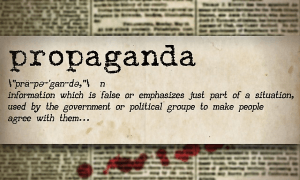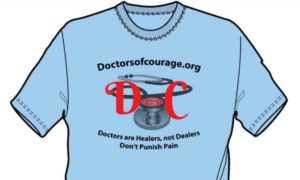The article in question is reporting on the Massachusetts Department of Public Health Report, published August, 2018, entitled
Opioid-related Overdose Deaths in Massachusetts
by Industry and Occupation, 2011-2015
The project was supported by a grant from the CDC and prepared by DPH’s Occupational Health Surveillance Program, in collaboration with the Bureau of Substance Addiction Services, Injury Surveillance Program, and Office of Special Analytic Projects.
Ms. Freyer starts her article with an appropriate title: Study links opioid deaths to workplace injuries, but moves to a completely off-the-wall conclusion:
“The report paints a disturbing picture of workers hurt on the job, taking addictive painkillers, and needing them to keep working at jobs they would otherwise lose.”
Another true statement:
“A Massachusetts study released Wednesday sheds light on an overlooked factor driving the opioid crisis: on-the-job injuries”
was then propagandized with:
“research cited in the report shows that injured workers are commonly prescribed opioid painkillers, which can lead to addiction.”
The rest of her article refers to the difficulties people in manual labor fields have in finding treatment for opioid addiction. Sorry, Ms. Freyer, but you are not only barking up the wrong tree, but you are helping to spread the wildfire.
At least 2 of the commenters on her article understand the REAL problem:
Hanscome: Let’s cut off on these guys prescriptions too and push them on to heroin and fentanyl. More people playing Russian roulette with opiates having no idea the dose. Hope the Globe staff and Baker don’t get a chronic pain condition. Then they will learn personally the pain they’ve caused for so many.
Gangtey: Saying “opioid overdoses” when you mean heroin and fentanyl overdoses is deliberately misleading and dishonest. The media and politicians call it “opioids” to try to make us afraid of harmless pain medications, but I’ll wager that no one died of an overdose from taking a three- or four- or five-day course of Percocet, prescribed by a doctor for pain, purchased at a pharmacy and taken as directed, and no one ever has. If you mean heroin, say heroin. If you mean a drug addict OD’ed on illicit drugs, say so. But if you expect people to believe that short-term use of relatively mild pain relievers taken as directed caused addiction and death, let’s see the details. And to keep it honest, no using the word “opioids.”
Now for the facts.
The DPH study analyzed the death certificates of 4,302 Massachusetts residents who supposedly died of opioid-related overdoses from 2011 to 2015 and whose death records listed an occupation. No differentiation was made between legally prescribed opioids and illegal.
The conclusion of findings at the beginning of the report shows the government-assumed link between legitimate use of opioid pain medications with the new diagnosis of “Opioid Use Disorder” which has become a blanket statement that “If you use opioids, then you are an addict:”
“These findings underscore the need for educational and policy interventions targeting high-rate worker populations to prevent opioid-related overdose deaths. Interventions should address workplace hazards that cause injuries for which opioids are prescribed, as well as appropriate pain management following injury, including safer opioid prescribing, access to evidence-based treatment for opioid use disorders, and overdose prevention education.”
The introduction states:
“Massachusetts is currently experiencing an epidemic of opioid-related overdoses and deaths. The estimated number of opioid-related overdose deaths in the state more than doubled from 2011 and 2015, and the rate of opioid-related overdose death is higher than the average for the nation. Efforts to end this epidemic require an understanding of the populations that are being most affected by it.
Findings from this report can be used to target interventions within industries and occupations that are impacted most by the epidemic and to help identify strategies to address workplace and socioeconomic factors that may be contributing to the epidemic.
Findings (numbers are rounded):
- Nine occupations had higher death rates than the average population:
- Construction and extraction occupations: 151 (97% in construction)
- Farming, fishing, and forestry occupations: 144
- Material moving occupations: 59
- Installation, maintenance, and repair occupations: 54
- Transportation occupations: 43
- Production occupations: 42
- Food preparation and serving related occupations: 40
- Building and grounds cleaning and maintenance occupations: 38
- Healthcare support occupations: 32
- Deaths by Gender
- the majority-77%-were male
- 23% were female
- Deaths by Race/Ethnicity and Occupation
- white, non-Hispanics: 27
- Hispanics: 19.7
- black, non-Hispanics: 14
Then the Study Brings in OUD:
Occupational Health/Safety and Socioeconomic Factors
Pain is a common feature among injured workers and previous research indicates that opioids are frequently prescribed for pain management following work-related injuries, which has the potential to lead to opioid use disorders.In order to gain insight into whether occupational injuries and illnesses may be a gateway to opioid use disorders, industry sectors and occupation groups were classified according to their respective work-related injury and illness rates obtained from the 2015 Survey of Occupational Injuries and Illnesses published by the Bureau of Labor Statistics. Workers in industry sectors with fewer than two injuries and illnesses per 100 full-time workers had the lowest rate of opioid related overdose deaths (13.5 per 100,000 workers), while workers in industries with four or more occupational injuries and illnesses per 100 full-time workers had the highest opioid-related overdose death rate (43.1 per 100,000 workers).
An even stronger association was observed when categorizing occupation groups according to their injury and illness rates. Workers within occupation groups with fewer than 50 injuries per 10,000 full-time workers had an opioid-related overdose death rate of 9.0 per 100,000, while workers within occupations with 200 or more injuries and illnesses per 10,000 workers had an opioid-related overdose death rate of 68.4 per 100,000.
Opioid-related overdose death rates were also examined in relation to two other factors that vary by occupation: job insecurity and availability of paid sick leave, both of which have potential to increase the need to work while in pain and may increase reliance on pain medication. A significantly higher death rate was observed among workers in occupation groups with high job insecurity compared with workers in occupation groups with low job insecurity
The construction industry stands out in this study as having both a high rate and number of opioid-related overdose deaths. These findings are consistent with previous reports that opioids are widely used for pain management following work-related injuries and suggest that these injuries and the need to work while in pain may contribute to the use and potential misuse of opioids.
Construction workers are also known to have high prevalence of musculoskeletal pain, far higher than the prevalence of work-related injury. In a 2010 nationwide household survey, over one-third of constructions workers reported back pain during the previous three months. The prevalence of back pain was higher among construction workers compared to workers in other industries for all age groups. In a 2012 study, almost 40% of construction workers older than 50 years reported chronic back pain. In a recent Massachusetts study of construction workers on a large commercial construction site, 74% reported having some kind of musculoskeletal pain in the last three months and about 40% reported having one or more injuries in the last month. This study also found high rates of mental distress and lack of treatment in this study population, and the authors hypothesized that “stigmatization and fear of job loss may interfere with help-seeking behaviors.”
Then again, without cause, they introduce:
The findings of high-rate industries and occupations in this report provide important new information for targeting intervention efforts to reduce substance use disorders.
The observation that opioid-related overdose death rates were higher in those industries and occupations that have high rates of work-related injuries and illnesses has important implications for interventions to reduce use and potential substance use disorders.
In a 2011 review of studies reporting on the use of prescribed opioids among workers receiving workers’ compensation benefits, it was found that the average percent of injured workers prescribed opioids was 31.8, but this ranged from 8.8% to 52.2% depending on the study.
The National Council on Compensation Insurers reported that 25% of workers’ compensation prescription drug claim costs in 2011 were for opioid pain medications. Many states, including Massachusetts, have taken steps to reduce opioid prescribing within the workers’ compensation systems. In Massachusetts, there was a 24% decline in the average amount of opioid use per injured worker in the Commonwealth when the 2010 to 2012 time period was compared to the 2013 to 2015 period.
Understanding the many complex factors contributing to the opioid epidemic is very challenging and additional research is necessary to understand the manner and extent to which work-related injuries, job insecurity, access to paid-sick leave, and other occupational and socioeconomic factors contribute to opioid use disorders in the working population. However, interventions can and should be implemented before all research questions are answered. These should address workplace hazards that cause injuries for which opioids are prescribed, as well as appropriate pain management following injury, including safer opioid prescribing, access to evidence-based treatment for opioid use disorders, and overdose prevention education. Some efforts are already underway. The Department of Public Health with support from the federal CDC is planning further research to assess the extent to which work-related injuries serve as initiation for opioid pain medication leading to subsequent opioid misuse.
So the basic message from the government study, elaborated on by Ms. Freyer, is that if your pain is treated with an opioid, you will become and addict, and that leads to a higher risk of overdose. They completely ignore that which is obvious to all of us involved in this failure to treat–that by not treating pain appropriately with opioids by a qualified physician, the person in pain will reach out to dangerous methods to self-medicate. Yes, they are probably driven by the need to work with pain, so they seek relief. However, as commenter Gangtey states, I’ll wager that no one died of an overdose from taking an opioid prescribed by a doctor for pain, purchased at a pharmacy and taken as directed. They should go back over the data and evaluate the actual treatment histories of the deceased. My guess is that they were weaned off of appropriate treatment without the benefit of healing the injury.
How Does This Play Into What I’m Trying to Get Across?
Trying to combat the opiahysteria created by false government association of legitimate opioid prescribing with OUD automatically interpreted as addiction with conventional medical arguments simply won’t cut the mustard. The ONLY way to break this chain is with the knowledge of the REAL Cause of Drug Abuse—and it ain’t the DRUGS!!!
If you are interested in joining the fight against this government-driven opiahysteria, become a member of DoC. Join HERE.
Linda Cheek is a teacher and disenfranchised medical doctor, turned activist, author, and speaker. A victim of prosecutorial misconduct and outright law-breaking of the government agencies DEA, DHHS, and DOJ, she hopes to be a part of exonerating all doctors illegally attacked through the Controlled Substance Act. She holds the key to success, as she can offset the government propaganda that drugs cause addiction with the truth: The REAL Cause of Drug Abuse.
Get a free gift to learn how the government is breaking the law to attack your doctor: Click here to get my free gift

